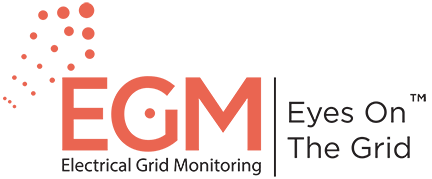What is DERM and What are its Goals
EGM is one of only four companies worldwide that has been selected to participate in the Shell GameChangerTM Accelerator Powered by NREL (GCxN). Under this auspice EGM collaborates with NREL to evaluate the essentiality of EGM’s Smart Monitoring and Insight Generation System (Smart M&IG System) for Distributed Energy Resources Management, also known as DERM.
The term Distributed Energy Resources, or DER, is used to describe a collection of large number of small, medium and large variable fluctuating renewable resources, grid level storage and small natural-gas gensets, scattered along the same grid – in addition to main power plants (which will become clean due to using natural gas).
A system based on such a variety of sources is very complex to manage, and if we add the electric vehicle (EV) as a Mobile Customer – we are in a very complicated medium to manage.
The purpose of DER management (DERM) is to achieve optimal incorporation and operation of DER in a way that fulfills consumers’ need for reliable, available and high quality supply of electricity, at the best price. While most of the electricity resources are owned by private players, including by customers themselves, the responsibility for conducting DERM lies with the grid operator.
At the end of the day DERM is a mean toward using significant amount of clean energies while achieving high electricity quality, system resiliency and efficiency. Key considerations in managing DER include, but are not limited to, preference for renewable energies; storage charging from cheapest and cleanest available source; as well as the need to balance between varying sources and varying demands. In order to accomplish its goal, DERM also has to enable adaptive hybrid prices.
Forms of DERM
DERM may come in different forms, varying mostly in size. “Management Zones” typically range from Nano Grid to Microgrid (usually a polygon of approximately 50KW to 15GW); to Basic Grid Segments such as an entire city, and characterized by relying on one distribution grid span with no transmission inside; to Cluster of Grid Segments in which several basic grid segments are connected to each other by transmission lines; and all the way up to High Level Grid Segments, which includes areas as big as states, each has several cluster of grid segments connected to each other.
Risks Associated with Uncontrolled DERM
While discussing the benefits of DERM is important, it is also crucial to understand what are the risks associated with uncontrolled DERM. Those include limiting the possibility of utilization of renewable energy sources; limiting the ability to manage dynamic consumers; over or under voltage at grid and customer facilities; poor safety, security and quality of customers supply; conventional distribution systems need adequate protection to accommodate effective exchange of power; signaling for central energy dispatch centers for extremely complicated resources and complex grid connection and inaccurate revenue generation.
In addition, the list of risks continues to include unbalanced DER with consumer protection and system protection for bi-directional power flow. And last but not least, metering and optional dynamic source selection is complicated and needs accurate measuring devices in many locations of the grid.
Role of EGM’s system
Such complicated grid can be managed only by sophisticated management system, which includes advanced operation system. But, unlike before, operation systems can no longer be based on calculated, estimated, revaluated and intuitive data.
The operation must be based on scientific probabilistic algorithms, which are based on high quality real data from field.
EGM system collects a very large amount of information that is constantly measured across all elements of Grid, which includes electrical, physical, environmental and other parameters, process this big-data and produces high quality useable information, crucial for operation.
Preliminary Financial Estimations
The only logical conclusion from the above discussion is that management of a DER based grid is non debatable. The discussion now turns to focus on financial considerations, i.e. all players understand they need a DERM, let’s see how much it costs.
For example, let’s take a total grid of 75,000 km, which provides 50 billion kWh per year. And suppose the cost of such grid improvement comes to $ 500 million. By charge 0.5 cent per kWh ($0.005) the investment will be returned in a spectacular time of just two years!
There is no debate today that the gains from significant use of renewable energy will result in a significantly greater gain than the cost of improving the grid.
Profits will come from both the low cost of renewable energy and the reduction of damages due to fossil fuel use.
Conclusion
The necessity of DERMs is no longer a question but a fact. We have shifted from discussing whether a utility really needs a DERM to how utilities organize themselves to adopt it sooner. EGM’s systems maximize benefits for utilities while offering significantly quick ROI.
